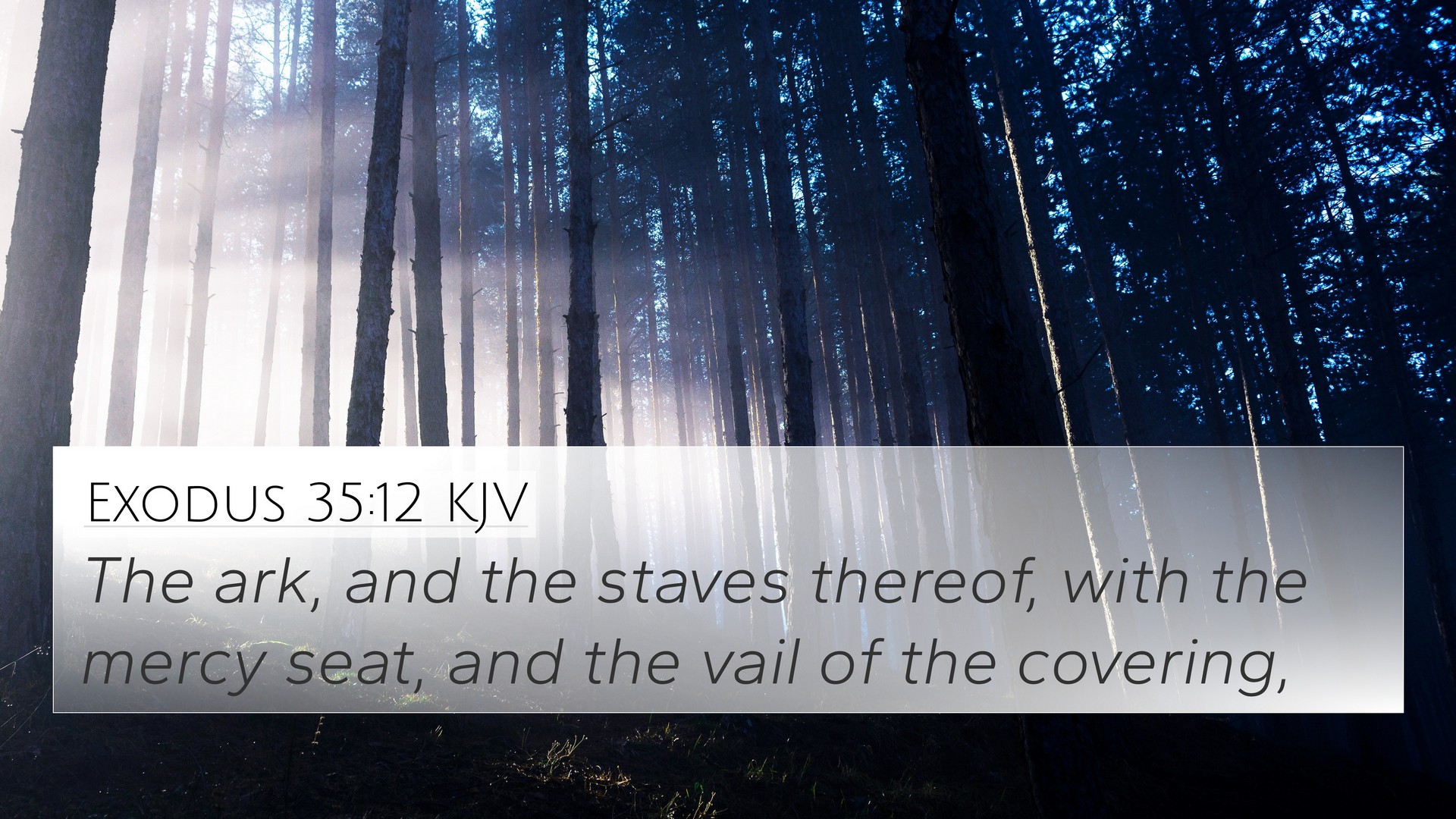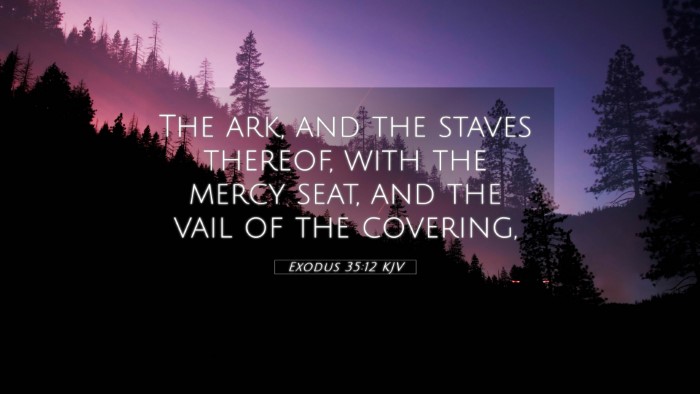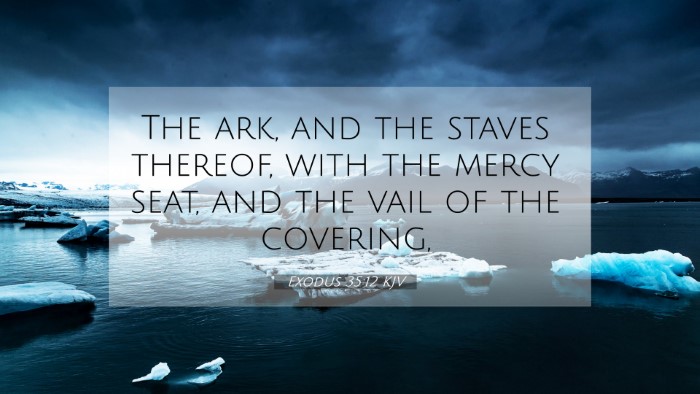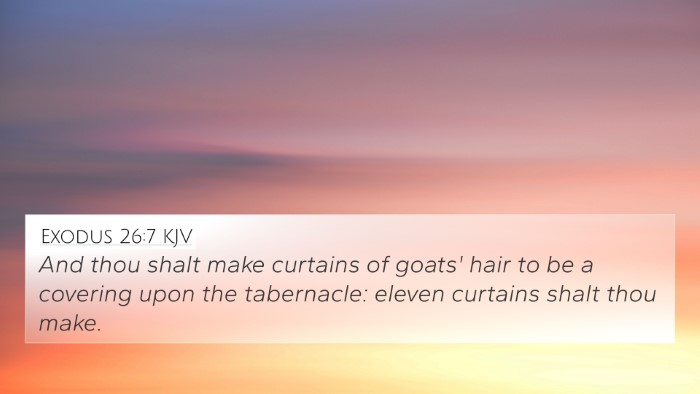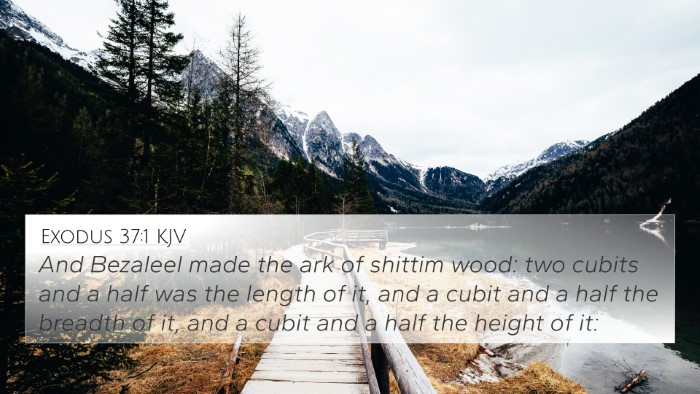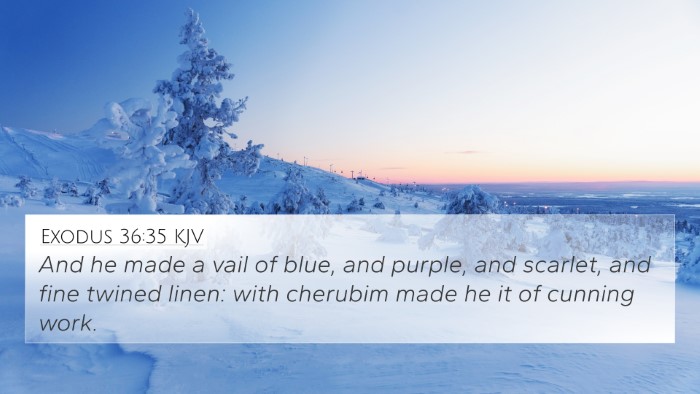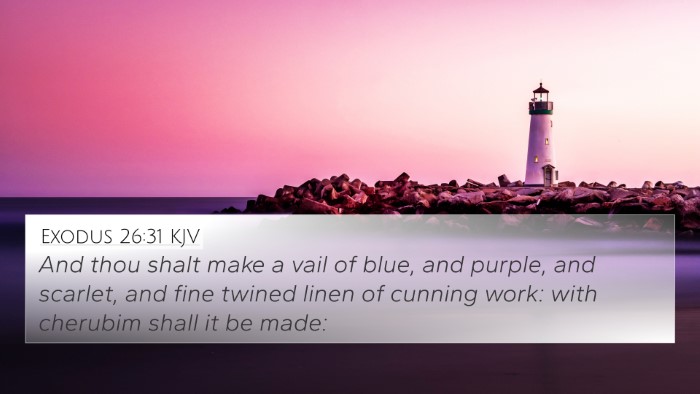Understanding Exodus 35:12
Exodus 35:12 states: "The ark, and the staves thereof, with the mercy seat, and the vail of the covering," which is a crucial verse in the design and construction of the Tabernacle, as outlined in the book of Exodus. This verse offers profound insights into God's instructions for His dwelling among His people. Below is a comprehensive analysis and interpretation of this verse based on various public domain commentaries.
Exegesis and Verse Meaning
This passage refers to the detailed instructions concerning the items to be made for the Tabernacle. The verse includes specific elements: the ark, staves, mercy seat, and vail of covering, each holding significant symbolic and theological meaning.
The Ark
The ark represents God's presence among His people. According to Matthew Henry's Commentary, the ark is a symbol of God's covenant, embodying His promises. The presence of the ark signifies that God is with His people, guiding and protecting them.
The Staves
The staves, or poles, were used to carry the ark (Numbers 4:15). Albert Barnes explains that the staves are a reminder that God's presence is to be moved and shared wherever His people go. This illustrates the portability of God's presence during Israel's journey in the wilderness.
The Mercy Seat
The mercy seat, which sat on top of the ark, was where God would meet with Moses. As Adam Clarke notes, it symbolizes God's mercy and grace. The mercy seat is a precursor to understanding Christ’s atonement for humanity, linking old and new covenant themes.
The Vail of the Covering
The vail serves as a barrier between the Holy Place and the Most Holy Place, a significant detail that indicates the separation between God and man due to sin. Matthew Henry points out how this vail foreshadows the role of Jesus Christ, whose sacrifice removes the barrier between God and believers.
Thematic Connections and Cross References
Understanding Exodus 35:12 also benefits from exploring thematic connections and cross-references within the Bible. The following verses relate closely to the themes presented in Exodus 35:12:
- Hebrews 9:4 - Discusses the contents of the ark, including the mercy seat.
- 1 Chronicles 28:11-12 - David gives plans for the ark and the temple, showing continuity in God's dwelling.
- Exodus 25:10-22 - Contains God's detailed instructions for making the ark and related items.
- Numbers 4:5-6 - Describes the carrying of the sacred objects, including the ark of the covenant.
- Matthew 27:51 - The vail of the temple is torn at Christ's death, symbolizing access to God.
- Romans 3:25 - References Jesus as the propitiation for sin, linking back to the mercy seat.
- 2 Corinthians 5:19 - Talks about God reconciling the world to Himself through Christ.
Connecting Themes in Scripture
Exodus 35:12 opens a dialogue not only within the Old Testament but also into the New Testament writings. By connecting the themes of God's presence, grace, mercy, and reconciliation, we can see how these elements are interwoven throughout Scripture.
In the process of studying this verse and its related scriptures, tools for Bible cross-referencing become essential. Utilizing a Bible concordance or cross-reference guide allows for identifying connections between the Old and New Testaments, enriching comprehension of God's overarching narrative.
Conclusion
Exodus 35:12 serves as a pivotal moment in the Israelites' journey, marking the establishment of God's presence among them through the Tabernacle. By understanding the meaning of the ark, staves, mercy seat, and vail, we grasp deeper theological insights that echo throughout the entire Bible.
In summary, engaging in comparative Bible verse analysis of Exodus 35:12 with its connections to other biblical texts enhances our understanding of God's redemptive plan and illustrates the profound ways in which Scripture interrelates.
